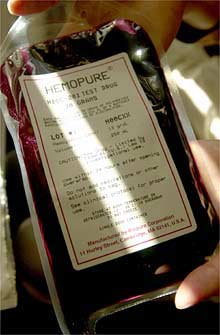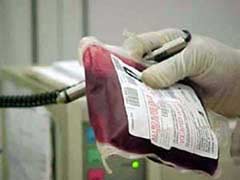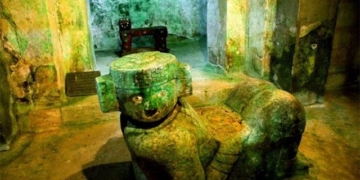After much effort, humanity is finally approaching the point of creating an appropriate, affordable, and easy-to-store artificial blood type, which is crucial in addressing the increasingly severe blood shortages around the world.
 |
| The new artificial blood type called Hemopure (Image: ajwrb) |
Adrien Cappy, a 55-year-old railway worker suffering from diabetes and peripheral artery disease, faced the threat of necrosis in his left leg. While lying in his hospital bed, his left leg had turned a pale blue, resembling that of a corpse. After an X-ray, doctors indicated that an urgent surgery was necessary to restore blood circulation. Failure to do so would result in amputation.
In the operating room, Mr. Cappy was anesthetized and placed on a ventilator. The doctors utilized a special tool to remove the clot obstructing blood flow and bypassed a new artery in the blocked area using a vein harvested from his right thigh. This relatively simple surgery typically causes minimal bleeding, allowing the doctors to close off the blood vessels in time. However, Mr. Cappy was unfortunate as blood continued to seep out for over four hours post-surgery. Nearly 2 liters of blood had escaped, an enormous amount compared to the 5-6 liters typically contained in the human body.
To sustain life, blood must contain five essential components: red blood cells carrying oxygen, plasma transporting nutrients and antibodies, pressure to deliver blood to various parts, factors for blood clotting, and hemoglobin to heal wounds. Mr. Cappy had lost almost all of these components or they were severely imbalanced. The situation was even more critical as he lived in South Africa, where over 5 million people are infected with the HIV virus, leading to a blood shortage that exceeds human control.
Fortunately for Mr. Cappy, the hospital had an artificial blood type called Hemopure, which is an oxygen-carrying component based on hemoglobin. Hemopure is produced by the British pharmaceutical company Biopure, with clinical trials conducted exclusively in South Africa, the UK, and the US. This clean, pure, and sterile artificial blood is currently a lifesaver for hospitals in South Africa.
The search for blood substitutes dates back to the mid-17th century when English physicians attempted to inject sheep’s blood into injured soldiers to save them, but it was unsuccessful. The practice of transfusing blood from animals to humans was immediately banned due to immune reactions. By the 19th century, doctors tried other substances like water, oil, and milk without success. Concurrently, there were experiments using human blood for transfusions, the most famous being the successful rescue of a patient in Philadelphia, USA, in 1875. This was a rare success, as most patients died due to their bodies rejecting foreign blood. By the early 20th century, humans had discovered how to differentiate between blood types to ensure correct transfusions and prevent rejection.
Donated blood is typically filtered and centrifuged into specialized products such as plasma, clotting factors, red blood cells, immune factors, and proteins, with wholesale prices sometimes reaching hundreds of thousands of USD per milligram. In an effort to stabilize blood supply issues, the International Red Cross established a strategic blood reserve worth $50 million.
To address the blood shortage crisis, hospitals need substances compatible with patients’ blood that can be stored at normal temperatures. Most importantly, these substances must be capable of transporting oxygen. Testing has shown that adding oxygen-carrying hemoglobin to liquids like saline does not create artificial blood, as the hemoglobin molecules are not sufficiently “reinforced”, are short-lived, and can be toxic to the liver and kidneys unless encapsulated in a fatty membrane of red blood cells. Simply coating hemoglobin with fat and “linking” them into polymers has also proven ineffective.
In the US, from 1989 to 1993, an artificial blood product called Fluosol was approved for use by the Food and Drug Administration (FDA).
 |
|
Hemopure is less viscous than human blood because it consists of smaller molecules that can more easily pass through obstacles and deliver oxygen directly to tissues in a completely new way. (Image: redcross) |
However, it was only administered to 13,000 patients before its license was revoked due to liver toxicity. Nevertheless, this failure did not deter at least 10 companies from researching new blood substitutes, led by Biopure with its artificial blood product Hemopure. Hemopure is a polymerized hemoglobin solution extracted from bovine blood, a rich source of hemoglobin.
In a trial involving 350 patients in the US, 96% of the patients did not require red blood cell transfusions on the first day after surgery. Six weeks later, 60% of other patients also did not need red blood cell transfusions. Hemopure is less viscous than human blood because it consists of smaller molecules that can more easily pass through obstacles and deliver oxygen directly to tissues in a completely new way.
The initial success of producing Hemopure has generated excitement among various sectors of society. Neurologists are interested because a blood substitute could mitigate the consequences of strokes. Meanwhile, oncologists see artificial blood as a means to supply oxygen to tissues around cancer tumors, which are often vulnerable to damage from radiation therapy. Most importantly, the successful creation of Hemopure could alleviate the current global blood shortage crisis.
Hoàng Phú

















































